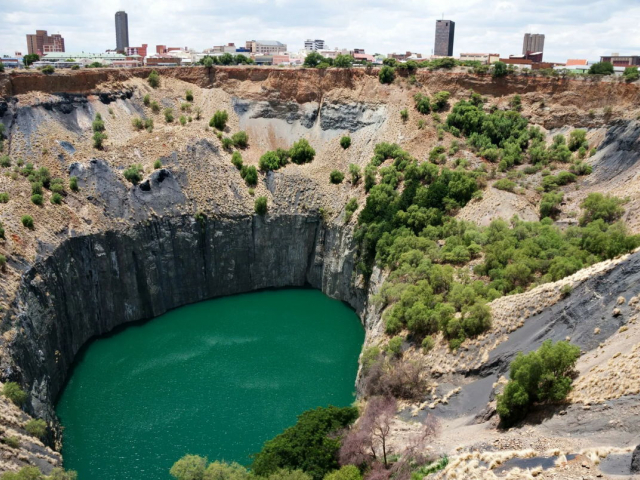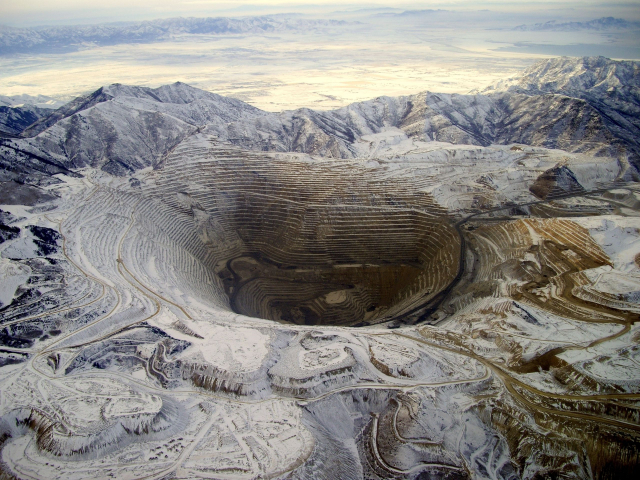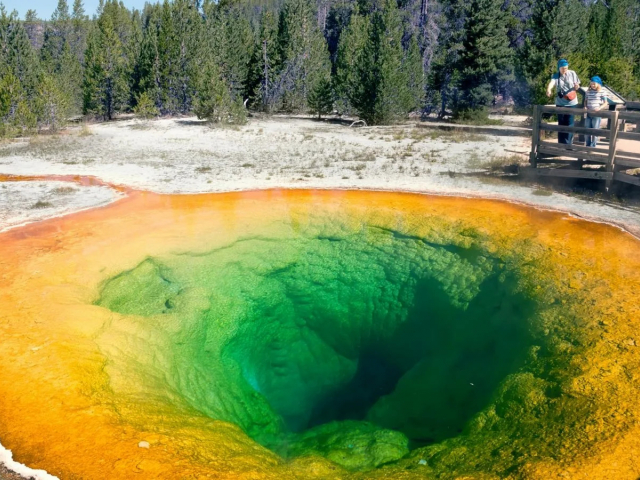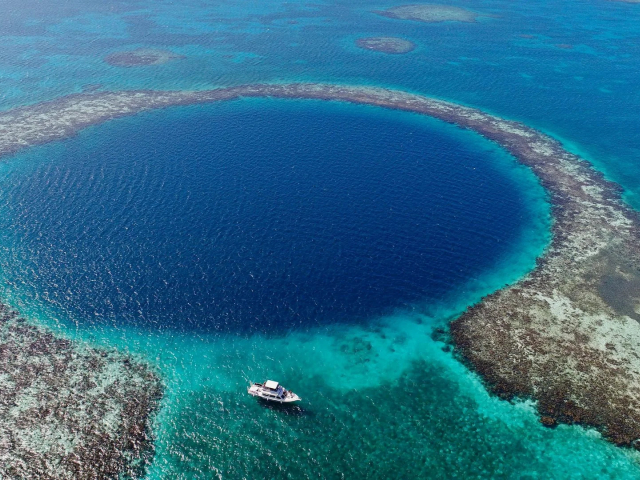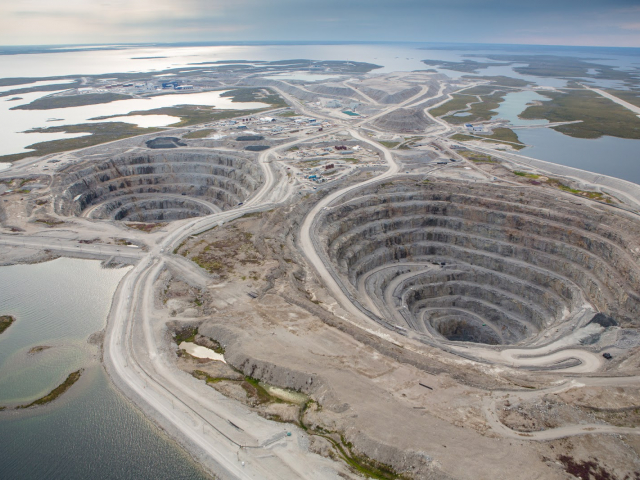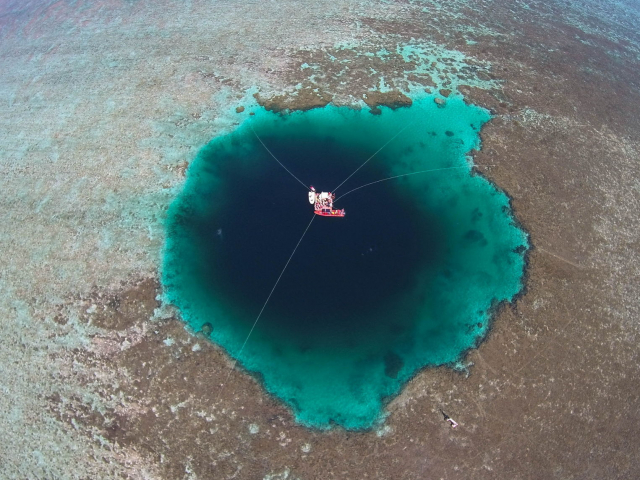Darvaza Crater
In the heart of the Karakum Desert, amid the sands of Turkmenistan, lies one of the world’s most unusual natural phenomena — the Darvaza gas crater, better known as the Gates of Hell. It formed in 1971 after a failed drilling operation when geologists accidentally punctured an underground gas pocket. To prevent methane from escaping, they set the crater on fire, assuming it would burn out soon. But the flames still blaze to this day, turning the site into a dramatic and haunting reminder of both nature’s power and human error.
Big Hole Mine
At the center of the South African city of Kimberley, there is one of the most famous man-made voids on Earth — the Big Hole diamond mine. It was developed in the late 19th century after the discovery of one of the largest diamond deposits in the world. Over several decades, miners manually removed millions of tons of earth, leaving behind a massive pit over 200 meters deep. Today, this impressive site stands as a monument to the scale of the diamond rush.
Bingham Canyon Mine
Located in the US state of Utah, near Salt Lake City, Bingham Canyon is one of the largest open-pit copper mines in the world. Operations began in 1906 and continue to this day. Over more than a century of mining, a colossal crater over 4 kilometers wide and more than 1.2 kilometers deep has formed. Bingham Canyon stuns not only with its sheer size but also with how mineral extraction can reshape an entire landscape.
Morning Glory Pool
Morning Glory Pool is not just a vibrant hot spring, but a true geothermal sinkhole plunging deep into the earth. Located in Yellowstone National Park, it mesmerizes with its near-perfect shape and vivid color palette — from deep blue in the center to bright yellow and green around the edges. These colors are caused by thermophilic bacteria that thrive at different temperatures. Despite its serene surface, an active geothermal system churns beneath, capable of awakening at any moment.
Great Blue Hole
Off the coast of Belize, amid the turquoise waters of the Caribbean Sea, lies one of the planet’s most spectacular natural formations, the Great Blue Hole. This giant marine sinkhole, roughly 300 meters across and over 120 meters deep, formed thousands of years ago when sea levels were significantly lower. From above, it appears as a deep blue circle in the middle of a pale lagoon. Today, it is not only a geological marvel but also one of the world’s top diving destinations due to its depth, symmetry, and mysterious underwater structure.
Diavik Mine
Diavik is one of Canada’s largest diamond mines, located in the remote northwestern part of the country, near the Arctic Circle. Its uniqueness lies not only in its production scale but also in its extraordinary location, on a small island in the middle of a frozen lake. The mine is an open pit, and from above, its shape resembles a massive crater carved into the snowy terrain. Diavik vividly illustrates how modern engineering makes it possible to operate efficiently in the harsh conditions of permafrost.
Dragon Hole Sinkhole
Hidden beneath the waters of the South China Sea is one of the deepest underwater sinkholes on the planet, the Dragon Hole. This karst void, submerged in the ocean, reaches depths of over 300 meters, making it the deepest known marine blue hole. Its vertical walls drop almost straight into darkness, and the internal conditions resemble a closed ecosystem. Scientists are actively studying this natural anomaly, as its depths may harbor life forms found nowhere else on Earth.
-
Grand Choice
Contest by
InstaForexInstaForex always strives to help you
fulfill your biggest dreams.JOIN CONTEST -
Chancy DepositDeposit your account with $3,000 and get $3000 more!
In September we raffle $3000 within the Chancy Deposit campaign!
Get a chance to win by depositing $3,000 to a trading account. Having fulfilled this condition, you become a campaign participant.JOIN CONTEST -
Trade Wise, Win DeviceTop up your account with at least $500, sign up for the contest, and get a chance to win mobile devices.JOIN CONTEST






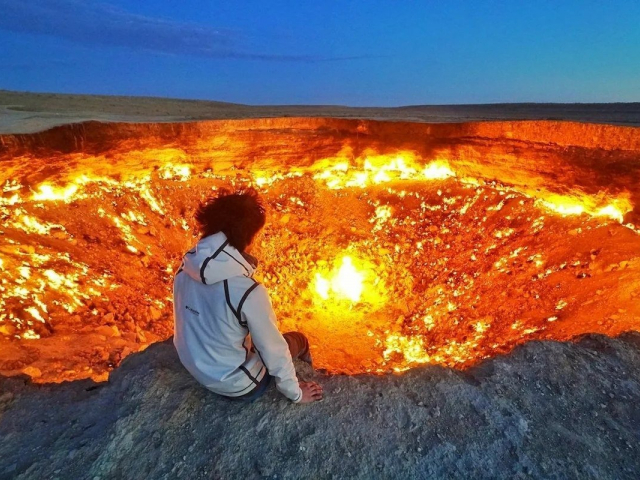
 361
361 7
7